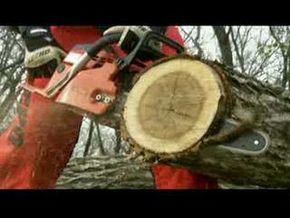Circular saw blades are made from all kinds of materials and have different types of teeth and blades. Each combination of material and style yields a blade that is ideal for a certain purpose. For instance, steel circular saw blades are great for slicing through softwood, but they wear our quickly if you try to cut hardwood with them. And the more teeth on the blade, the easier it'll slice through certain materials. To cut plywood, you're better off with 100 or more teeth, but to cut across the grain of regular wood, you can make a smooth cut starting out with just 48 teeth [source: Lowe’s]. Plus, your saw may be better for certain tasks depending on where the handle, motor and blade are in relation to each other.
To cut through concrete, you need a circular saw blade with diamond tips or some other kind of abrasive blade. As with any replacement blade, when you attach an abrasive blade to your saw, you have to make sure that it's the right diameter for your tool. A worm-drive style saw where the motor and blade line up and the handle is toward the back is probably best for a big job like cutting concrete. You also need to make sure your saw is strong enough. The amp rating on a saw tells you how much power the saw uses, but not how much it yields. Oddly enough, the price of a saw may be the best indication of its quality and strength [source: Dekorne].
Advertisement
When using a circular saw to cut through concrete, safety should be your first concern. Like in any dangerous task, protective gear for your eyes and ears is a must. Make sure you're using the right type of blade for the task, and only use an abrasive blade if your saw has an aluminum or magnesium guard on it.
